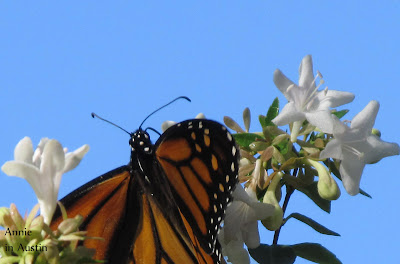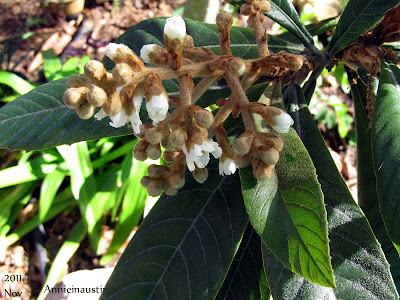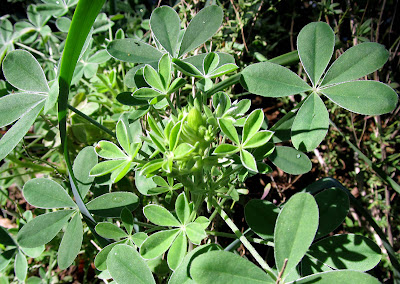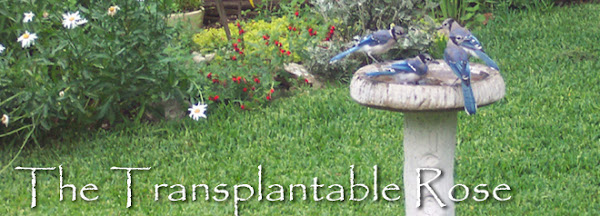There's a complete list of blooms for November 15th (along with more photos) over at my Annie's Addendum blog. Please take a look! I did my best with the botanical names but I'm not a botanist - let me know if you think something is wrong.
Spot watering/hand watering has kept quite a few things alive in spite of drought and heat. The almost-3 inches of rain that fell on October 9 helped the shrubs and the cooler weather has helped everything - including the gardeners.

A few weeks ago the Abelias began blooming and suddenly Monarch butterflies appeared. Now the Monarchs have moved on and the A-Bee-Lias bloom for another kind of winged insect

Their flowers are lovely whenever they appear but that bees will love them is expected.
Another lovely thing is the Loquat tree, mostly recovered from bad freeze damage last winter, and just beginning to open its fragrant flowers.

That scent now says Thanksgiving to me, so it's not unexpected in November but after the hailstorms, flood, deep cold, extreme heat and unprecedented drought it's experienced in the last couple of years, I'm grateful that the scent of the loquat still floats on the air.
What is unexpected is to see bluebonnets with buds in November. Apparently some seeds had sprouted in late winter or early spring but were immediately overshadowed by the nearby seedlings of Cosmos. The bluebonnets lurked underneath the jungle of tall orange cosmos leaves and stems, only revealing themselves when that generation of cosmos died off so a new crop could start. My neighborhood has only had a light frost so far - it will be interesting to see whether this flower will be able to bloom blue or if it will freeze.

The usual milkweed grown in Illinois was the orange perennial Asclepias tuberosa. I've tried that here with no luck. So a few years ago I planted the tropical milkweed, Asclepias curassavica , and now it is a reseeding annual in my garden. Seeds often sprout in inconvenient places so some are pulled up, but I always let a handful grow on to bloom with colorful yellow petals & red-orange sepals. This month there are many flowers on four plants but there seems to be something unusual about the sepals. Although I can't remember them being anything but solid red-orange in previous years, this year all four plants display white blotches on some of the sepals.

Darned if I know why... they seem to be opening solid first and then the white streak shows up. Has anyone else seen these white marks on tropical milkweed? Does anyone know why it happens?
 After you've checked out the list on the Addendum you can find more than 125 gardens linked to May Dreams Carol for November Garden Bloggers Bloom Day.
After you've checked out the list on the Addendum you can find more than 125 gardens linked to May Dreams Carol for November Garden Bloggers Bloom Day.








